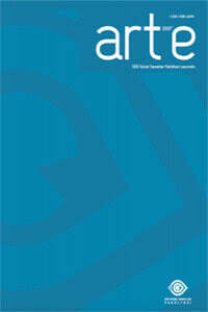Gördes Halılarında Görülen Değişim ve Nedenleri
Manisa İline bağlı Gördes İlçesi Türk dokuma kültürünün şekillendiği ve devam ettirildiği önemli merkezlerden birisidir. Kendine özgü renk, motif ve desen özellikleriyle Türk Halı Sanatı içerisinde farklı bir yeri olan Gördes halılarının 17. yüzyıldan itibaren dokunmaya başlandığı bilinmektedir. Gördes ve çevresi zaman içerisinde Anadolu’nun önemli halı merkezlerinden birisi haline gelmiştir. Ancak son zamanlarda geleneksel dokumacılığımızın yaşadığı değişim Gördes halılarında da kendisini hissettirmektedir. En yaygın sebep olarak bilinen ticari kaygıların sonucunda ortaya çıkan bu değişim, yöre halılarında renk motif ve desen özeliklerinin değişmesi ile kendisini belli etmektedir. Bu çalışmada da Gördes halılarının renk, motif ve desen özelliklerinde görülen bu değişimin belirlenmesi ve belgelenmesi amaçlanmıştır. Yapılan araştırma sonucunda yörede dokumada kullanılan ipliklerin bitkisel boyalarla boyanmasının giderek azalması ve yapay boyaların bu amaçla kullanımın yaygınlaşması sonucunda renklerde önemli bir değişim yaşandığı gözlenmiştir. Bununla birlikte Gördes halısı dokumacılığının azaldığı, bu geleneksel halıların yerini de daha çok ticari amaçlı dokunan ve desen adı olarak “Kırkyama” ile “Şal” olarak isimlendirilen halıların aldığı tespit edilmiştir. Anahtar kelimeler: Gördes, dokumacılık, halı. Common Causes Of Change Of The Gordes Carpets Abstract Town of Gordes that depending on the Manisa is one of the major center which Turkish culture has shaped and continue weaving. From the 17th century is known as Gordes carpets began to weave with its unique color, pattern and texture features. Gordes and the environment has become one of Anatolia's most important centers of carpet over time. However, the changes recently experienced by traditional weaving is reflected also in Gordes carpets. Known as the most common cause of this change occurring as a result of commercial considerations, local carpets colors, designs and patterns with changes. In this study, the color of Gordes carpets, motifs and patterns identified and documented these changes in properties were investigated. In a study conducted in the region of the yarns used in weaving dyed with vegetable dyes and artificial dyes is decreasing as a result of the expansion of this use is experiencing a significant change in color was observed. However carpet weaving Gordes decreased and at the location of the conventional carpet and the pattern weaved for more commercial designation "Sewing" and "release" have been identified as being known as carpets. Key words: Gördes, weaving, carpet.
Gordes District of Manisa Province is one of the major center which Turkish culture has shaped and continue weaving. From the 17th century is known as Gordes carpets began to weave with its unique color, pattern and texture features. Gordes and the environment has become one of the Anatolia's most important centers of carpet over time. However, the changes recently experienced by traditional weaving is reflected also in Gordes carpets. Known as the most common cause of this change occurring as a result of commercial considerations, local carpets colors, designs and patterns with changes. In this study, the color of Gordes carpets, motifs and patterns identified and documented these changes in properties were investigated. As a result of in this study, weaving yarns which are dyed by herbal pigment, decreased in time step by step and the colors changed significantly due to the expansion of artificial dyes is being observed. Moreover, weaving Gordes carpet decreased and commercial products, called “patchwork” and “throw” become widespread instead of traditional Gordes carpet at the same time.
